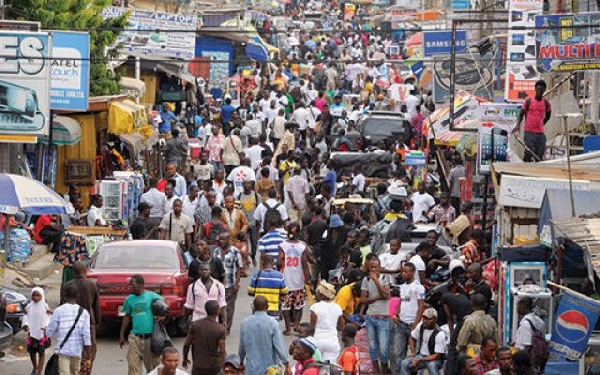The maiden Ghana Statistical Service (GSS) quarterly report on Annual Household Income and Expenditure Survey (AHIES) 2022 has disclosed that about 6.4 million persons in the country are “simultaneously food insecure and multidimensionally poor”.
According to the GSS, almost half of the Ghanaian population was food insecure in the first quarter of the year, representing 15.1 million of the 30.8 million persons in the country. “Nearly half (49.1 percent) of the population representing 15.1 million people experienced food insecurity in quarter-one; this reduces to 13.0 million (42.1 percent) in quarter-two,” it noted.
The report also revealed that the prevalence of food insecurity is higher in rural areas than urban areas.
Giving a regional breakdown, it says: “In first-quarter 2022, the prevalence of food insecurity in four regions in the northern part of the country [Savannah (58.8 percent), Upper West (61.8 percent), North East (65.6 percent) and Upper East (73.7 percent)] were more than twice that of Greater Accra Region, which is 27.2 percent”.
Meanwhile, all 16 regions experienced a reduction in food insecurity between the first and second quarters except for Upper West Region, moving from 55 percent to 61.8 percent.
On the other hand, Oti and Western North regions experienced the largest declines of 19.6 and 18.7 percentage points respectively.
“Between quarters one (12.3 percent) and two (6.4 percent), severe food insecurity reduced by almost half. The decline is higher for rural households. The prevalence of severe food insecurity is highest in North East Region (32.9 percent) and lowest in Eastern Region (7.3 percent). Nine regions recorded higher severe food insecurity prevalence than the national prevalence (12.3 percent),” the report indicated.
Multidimensional poverty
Also, the 2022 Annual Household Income and Expenditure Survey has it that 13.6 million people, representing 44.1 percent of the population, were multidimensionally poor in the first quarter of 2022.
The second quarter’s numbers showed a rise to 14.4 million persons – thus 46.7 percent, making the situation worse. It added that even though about 803,000 more people were poor in the second quarter, the extent of poverty reduces across the two quarters.
The survey
The Annual Household Income and Expenditure Survey (AHIES) is the first nationally representative high-frequency household panel survey in Ghana. The AHIES is being conducted to obtain quarterly and annual data on household final consumption expenditure and a wide scope of demographic, economic, and welfare variables: including statistics on labour, food security, multidimensional poverty, and health status for research, policy and planning.
Experts on food insecurity
In an earlier interview with the B&FT, experts including the Director of the Institute for Statistical, Social and Economic Research (ISSER) at the University of Ghana, Prof. Peter Quartey, and the Head of programmes and Advocacy at Peasant Farmers Association of Ghana (PFAG), Dr. Charles Nyaaba, raised concerns on food insecurity – urging t government to review policies and intentionally invest in the sector.
Prof. Quartey said that with food being one major driver of inflation, pragmatic measures must be adopted to ensure its security and prevent any imminent crisis.
For Dr. Nyaaba, government must open-mindedly review its policies for the sector and support it with funding.










